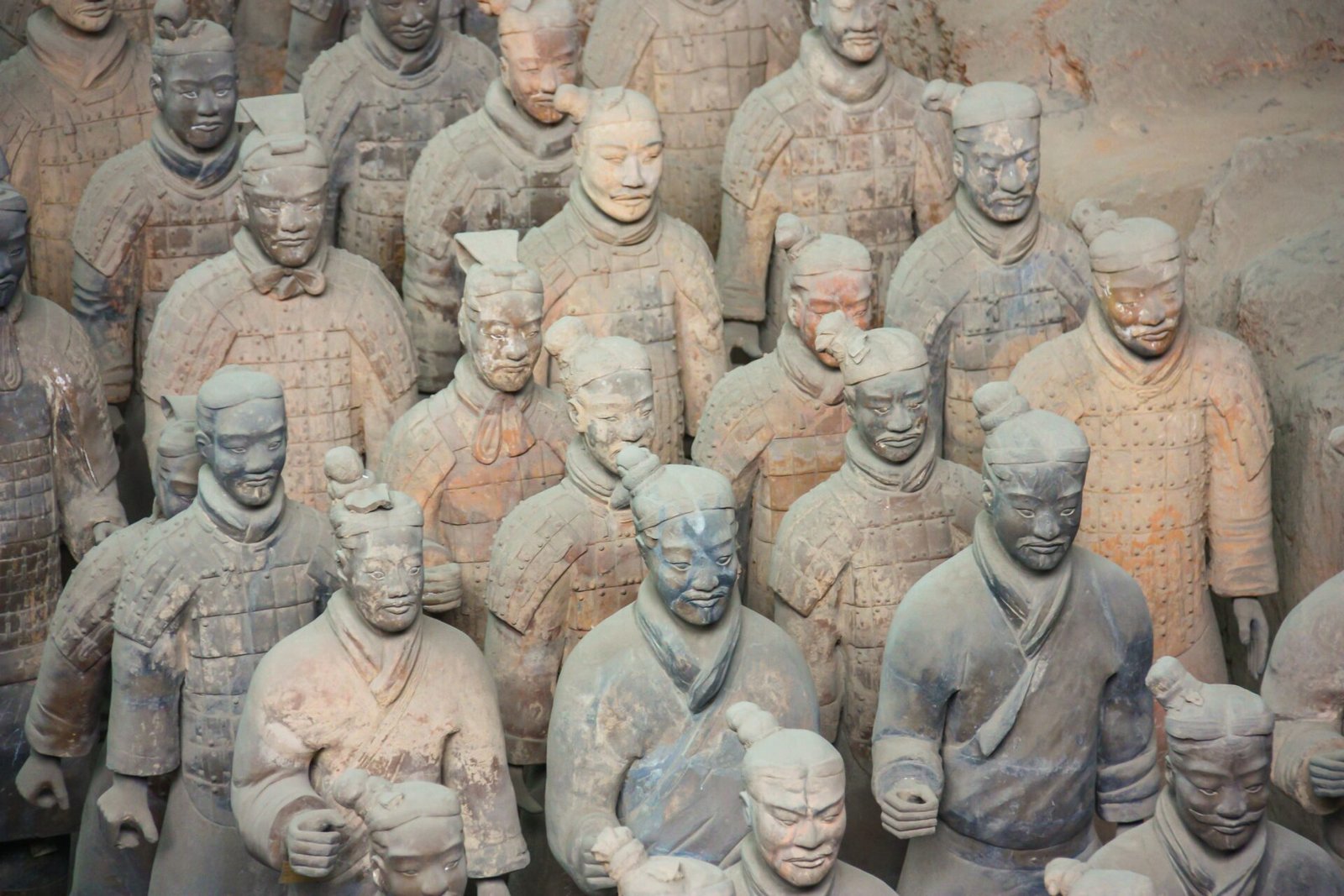The Terracotta Warriors, also known as the Terracotta Army, are a collection of life-sized terracotta sculptures depicting the armies of the first Emperor of China, Qin Shi Huang. These sculptures were discovered in 1974 by local farmers in Xi’an, Shaanxi province, China. They were buried alongside the Emperor’s tomb and were meant to protect him in the afterlife.
The Terracotta Warriors are believed to have been created in the 3rd century BCE and are considered one of the greatest archaeological finds of the 20th century. The sculptures depict soldiers, horses, chariots, and even musicians and acrobats, all made of terracotta clay.
There are an estimated 8,000 soldiers in total, with each one being unique in terms of facial features and hairstyle. The soldiers are also organized into different military units, with each unit having a specific function. For example, there are archers, infantrymen, and cavalrymen, each with their own distinctive uniforms and weapons.
The Terracotta Warriors are not just impressive in terms of their size and scale, but also in terms of the level of detail and craftsmanship that went into their creation. Each sculpture was individually crafted by hand and then fired in a kiln to harden the clay. After firing, the sculptures were painted and dressed in real armor and weapons.
The discovery of the Terracotta Warriors has provided historians with valuable insights into the military and cultural practices of ancient China. The sculptures have also become an important tourist attraction, drawing millions of visitors each year to the city of Xi’an.
Despite the importance of the Terracotta Warriors, there are still many mysteries surrounding their creation and purpose. For example, it is unclear why the sculptures were buried alongside the Emperor’s tomb and whether they were intended to be an exact replica of the Emperor’s army or a more symbolic representation.
Overall, the Terracotta Warriors are a testament to the ingenuity and skill of ancient Chinese craftsmen and remain one of the most awe-inspiring archaeological finds in the world.
Read More:
